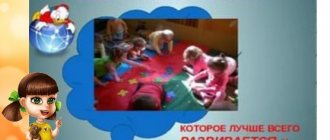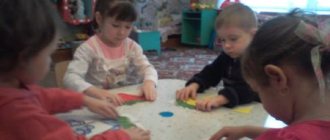What games help develop sensitivity at all levels?
Since I’m in the younger group, I’ll give you my card index, but I’ll try to make additions for different ages. In general, the meaning of such games is this: to give the child a wide range of sensations and knowledge about the properties of objects, substances, phenomena that can be felt tactilely, visually, auditorily and “smelling”. In the same way, these same sensory-didactic, that is, educational games are suitable for young children. It is necessary to select games that are adequate to the child’s age capabilities.
For simplicity, I divided the card index into 5 blocks: the development of visual perception, auditory, olfactory, tactile, as well as games for fine motor skills and purposeful actions.
I will not describe absolutely all the components of the card index, and it would be stupid to list them without a description, because you can’t always understand the essence by the name, so I will give a description of the most effective games for sensory development. You will see how simple, interesting and useful it is to amuse your baby and teach at the same time!
So, 1 block of didactic games for training visual sensitivity:
- “Lids and boxes”: you can take empty plastic jars with gouache lids, they are usually multi-colored. Place cards inside to match the color of the box. For older children, you can place beads or other small objects in monochrome colors.
Objectives: we train the ability to correlate colors, find identical ones, analyze and systematize. At the same time, we train motor skills, learning to open lids. We exercise the ability to distinguish shape and size. If you shake a jar with a card inside, you will also train your hearing.
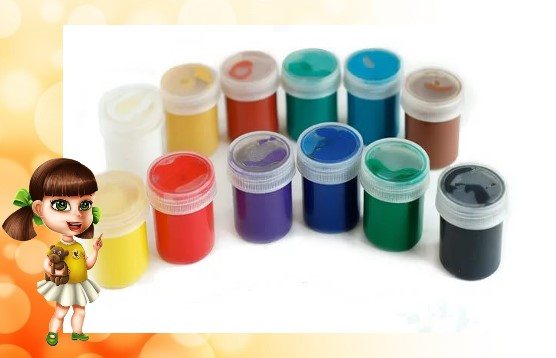
Believe me, if you complicate the task, the middle and older groups will be interested in this game. For them, you can add shades of colors, place inside a card with a picture that is not monochrome, but made predominantly of one color. We select lids with threads to make it more difficult to open.
- “Vegetable Garden” is a game for the development of sensory standards. We take small square cardboards, draw the outline of a fruit or vegetable on them and cut out the middle. Separately, we have cardboard boxes of the same size, but completely painted over, matched to the colors of the prepared fruits and vegetables. Task: find its color for each fruit and place the blank on top of the corresponding colored cardboard.
Didactic games for the development of auditory perception: 2nd block
- To organize this type of game, waste material is suitable. For example: “Colorful noisemakers.” We take plastic bottles and glue labels of different colors to them, but of the same color. We will stir anything inside, as long as it fits into the neck and is matched to the color of the label: dyed legumes, cereals, beads, sand. The baby shakes these noisemakers, now stronger, now weaker, catching the difference in the sounds made.
At the same time, we will train our visual perception of color and motor skills. Children aged 2-3 years love this game. In the second junior group, and even in the first junior group, this fun is a great success. Apparently, babies still miss rattles...
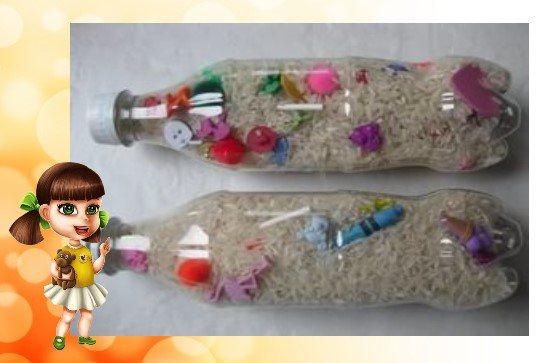
And to make the fun more interesting in the 1st junior group, you can decorate the noisemakers in the form of toys: take a plastic Kinder egg, put different objects inside (cereals, a ball, whatever), cover them with fabric or crochet them, creating chickens, for example. Each chick will make different noises.
The preparatory group can complicate the task: pour the contents of the bottles into separate boxes and then again select the filling required for each specific bottle by color. In addition, if you shake bottles consciously, you develop a sense of rhythm, and this is an ear for music!
- "Who's making noise?" – goes well in the middle group. Behind the child’s back, we make characteristic sounds using any objects: rustling the pages of a book, knocking something on the table, etc. The child must guess what makes the sounds. Great ear training!
Block 3: developing the sense of smell...
There is no need to go far here; the games smoothly move into the kitchen. The average group can cope with this task quite well:
- “Guess what the chick will eat?” – the child plays the role of a hungry chick, and someone else imagines himself as a mother bird who has flown in to feed her young. But the mother is cunning: the chick must first guess by the smell what the mother brought him. We bring the child a piece of something edible and let him inhale the aroma. This is very interesting for older children, but the 2nd younger group can also try to guess.
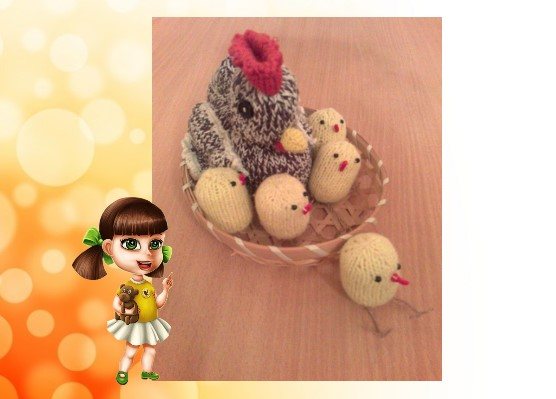
- Older preschoolers will enjoy competing in the game “What does it smell like?” The idea is this: we make small bags of gauze in advance, and immediately before the game we place pieces of food with a characteristic aroma into the bags: citrus fruits, coffee beans, onions, garlic, apples, etc. Again, the baby guesses what’s inside.
Now the expanse of fruits, the preparatory group and younger preschoolers can train a more subtle sense of smell, let them learn to distinguish the smells of vegetables and fruits with a weakly expressed aroma.
Despite the simplicity of such didactic games, they are of great benefit. Through play, the child receives full sensory education and enriches the world of his sensations. And this already develops the brain as a whole. Moreover, our vocabulary is also enriched, because we learn new words.
4th block: enriching tactile sensations
- “Surprise”: place a deep container with sand, cereals, etc., in which objects are hidden. The child finds it, rejoices and at the same time develops the sensitivity of his fingers.
- “Hello!”: we make blanks in advance from materials of different textures, gluing them onto cardboard and cutting out palms. The child puts his palm on the workpiece, feels the texture, learns new concepts: smooth, rough, soft, fluffy.
- “Sinking or not sinking”: we take a container with water and in another container - different objects that can be soaked in water. The child explores which objects sink and which do not, and tries to guess in advance the possibility of floating on the water.
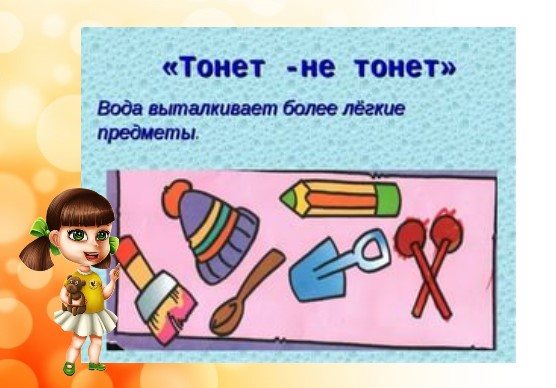
To develop tactile sensations, you can use everything you see around the house while walking. Yes, the child trains himself, feeling everything that comes to hand. But it is imperative to focus the baby’s attention on the names of phenomena and sensations. Pay attention to color, shape, size.
What can I say, you have already guessed how useful didactic games for the development of tactile sensations are for little autistic children - autistics, and for all children with mental retardation (mental retardation).
Block No. 5: learning to take purposeful actions
- “We sell cereals”: we pour different types of cereals or sand into bowls, we learn to pour cereals into other containers, as if for a buyer.
- “Treat the doll with candy”: take round plastic round containers with lids and decorate them in the shape of a doll’s head. Glue or draw a face and hair. We cut a small hole in place of the mouth. Separately, we are preparing a box with multi-colored buttons, which will be our candies. You need to push the candy button into the doll’s mouth.
- Exercise machines with laces, Velcro buttons, clasps, etc. work great for educational purposes. At least you need to make a simulator with buttons: sew buttons onto the fabric, stretch the fabric onto plywood or something similar. Separately, we make blanks with loops for buttons, for example, these are flower petals that need to be attached to a button and made into a flower.
Even the descriptions of several games took up a lot of space on the blog page. I suggest just buying special literature and making your own card index of didactic games.
So, manuals from UchMag:
- “Sensory development of young children. 1-3 years." While the book is out of stock, you can always leave a request for a missing item on this website;
- “Sensory development of children 2-3 years old. Color. Form. Size” – here are presented didactic games and exercises for organizing joint activities between the teacher and young children;
- “Sensory development of children 3-4 years old. Color. Form. Size" - the same for younger preschool age;
- “Sensory development of children 4-5 years old. Color. Form. Size” – respectively, average preschool age;
- “Sensory development of children 5-6 years old. Color. Form. Size” – materials for the older group;
- “Sensory development of children 6-7 years old. Color. Form. Size" - for the preparatory group.
Game methods for forming ideas about color
The main focus is on color recognition exercises and games. With their help, a preschooler can become familiar with the generally accepted system of shades and color tones, which are included in the form of transitional phrases.
These games are very important, because children, when perceiving color in the environment, drawing it with paints and pencils, are not able to independently learn to systematize shades and tones.
G.S. Shwaido offers his own model for constructing games for color discrimination and recognition. First, the child must remember colors that are close to each other. Then he must learn to distinguish colors by dark and light shades.
After this, children should learn to distinguish between shades of one color. First, choose two shades. Then several.
To firmly grasp sensory standards, you need to repeat games many times. But repetition needs to be organized in different ways. If you repeat didactic games without changes, this will give children the opportunity to consolidate acquired skills and knowledge during the exercises.
But if you make familiar games a little more complicated, it develops interest in them. Solving new problems brings children a sense of satisfaction and joy, and children are fueled by a desire to be mentally active.
Didactic games for learning motivation
Didactic games are games that are created and adapted specifically for teaching children.
This is a type of game with rules that are specially created by teachers for raising and teaching children.
Didactic games are a rather complex pedagogical phenomenon, consisting of many plans. A game is a gaming method, a form of learning, an independent activity, and a means for personal education.
We study didactic games as teaching methods in two forms: activities and didactic games. During classes, the leading role is taken by the teacher, who tries to increase preschoolers’ interest in classes using game techniques. He can create competitive elements and introduce game situations. The use of different components of gaming activity can be combined with instructions, demonstration, explanations and questions.
Researchers in the field of games highlight its structure: tasks, rules and actions.
The game used for teaching includes a didactic, educational task. During the game, children try to solve the problem in a form that is exciting for them, which can be achieved through certain game actions.
Each didactic game is endowed with a detailed game action. According to a group of teachers, didactic games become games due to the fact that they contain game moments: surprises and expectations, elements of competition and movement, riddles and distribution of roles.
Motivation for completing didactic tasks is the child’s natural desire to play, achieve gaming goals, and win. This is what encourages them to listen and look more carefully, quickly focus on the necessary properties, select objects and group them as required by the game conditions and rules.
Usually teachers confuse the concepts of “game exercise” and “game”. And game exercises are sometimes mistakenly called games by teachers.
But if you use play exercises instead of games, then children's interest can often quickly fade away. N.Ya. Mikhaileno identifies the following components of the game: actions, rules, winnings.
If the activity that the teacher offers for children does not have a competitive component and it is impossible to record championship as a win, then it is just a game exercise. To prevent the game from turning into a gaming exercise, it is necessary to introduce gaming actions with a competitive component into the process.
